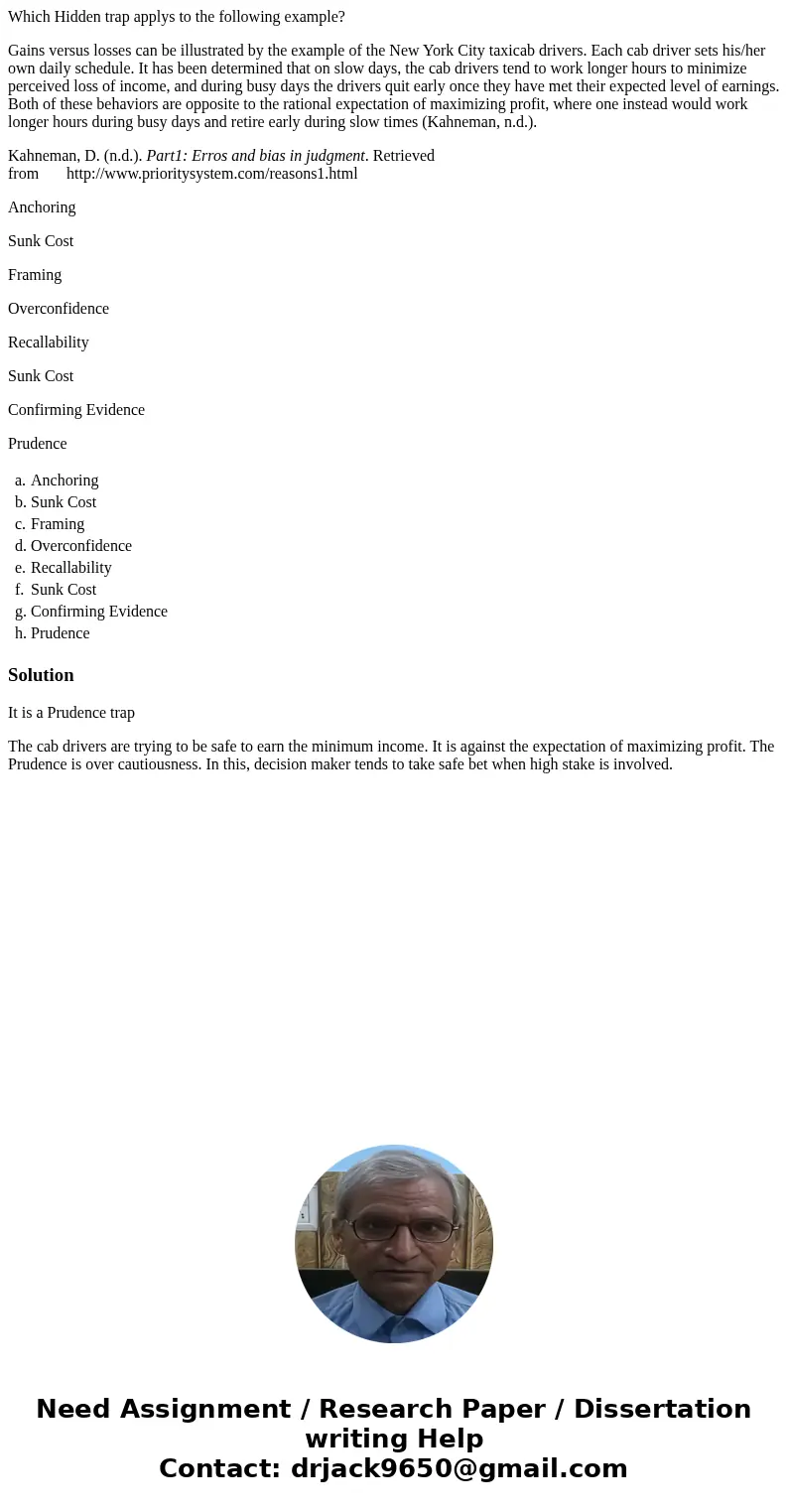Which Hidden trap applys to the following example Gains vers
Which Hidden trap applys to the following example?
Gains versus losses can be illustrated by the example of the New York City taxicab drivers. Each cab driver sets his/her own daily schedule. It has been determined that on slow days, the cab drivers tend to work longer hours to minimize perceived loss of income, and during busy days the drivers quit early once they have met their expected level of earnings. Both of these behaviors are opposite to the rational expectation of maximizing profit, where one instead would work longer hours during busy days and retire early during slow times (Kahneman, n.d.).
Kahneman, D. (n.d.). Part1: Erros and bias in judgment. Retrieved from http://www.prioritysystem.com/reasons1.html
Anchoring
Sunk Cost
Framing
Overconfidence
Recallability
Sunk Cost
Confirming Evidence
Prudence
| a. | Anchoring | |
| b. | Sunk Cost | |
| c. | Framing | |
| d. | Overconfidence | |
| e. | Recallability | |
| f. | Sunk Cost | |
| g. | Confirming Evidence | |
| h. | Prudence |
Solution
It is a Prudence trap
The cab drivers are trying to be safe to earn the minimum income. It is against the expectation of maximizing profit. The Prudence is over cautiousness. In this, decision maker tends to take safe bet when high stake is involved.

 Homework Sourse
Homework Sourse